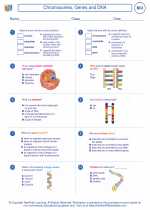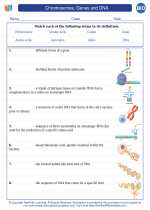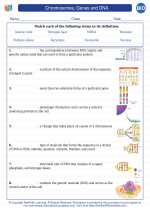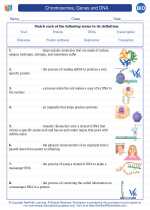Phenotype
The term "phenotype" refers to the observable physical and biochemical characteristics of an organism as determined by its genetic makeup and environmental influences. It includes traits such as hair color, eye color, height, and other physical features. The phenotype is the result of the interaction between an organism's genotype and its environment.
Genotype and Phenotype
An organism's genotype is its specific genetic makeup, which can be thought of as the collection of its genes. These genes provide the instructions for the development and functioning of the organism. The phenotype is the expression of those genetic instructions as physical and biochemical traits. For example, while the genotype may contain the instructions for eye color, the actual color of an organism’s eyes is part of its phenotype.
Study Guide for Understanding Phenotype
1. Genetic Basis of Phenotype
Understand the relationship between an organism's genotype and its phenotype. Learn how specific genes contribute to the expression of physical traits in an organism.
2. Environmental Influences
Explore how environmental factors can also influence an organism's phenotype. Examples include the effect of nutrition, temperature, and other external factors on the development and expression of traits.
3. Variability and Inheritance
Study how variations in genotype can lead to differences in phenotype, and how these variations are inherited from one generation to the next. This includes understanding concepts such as dominant and recessive traits, as well as the principles of Mendelian genetics.
4. Molecular Basis of Phenotype
Delve into the molecular mechanisms that underlie phenotype expression, including processes such as gene expression, protein synthesis, and the role of regulatory elements in determining phenotype.
5. Examples and Case Studies
Explore specific examples and case studies that illustrate the relationship between genotype and phenotype. This can include genetic disorders, traits controlled by multiple genes, and the impact of gene-environment interactions on phenotype.
By mastering the concept of phenotype, you can gain a deeper understanding of how genetic and environmental factors contribute to the diversity of life forms on Earth.
.◂Biology Worksheets and Study Guides High School. Chromosomes, Genes and DNA

 Worksheet/Answer key
Worksheet/Answer key
 Worksheet/Answer key
Worksheet/Answer key
 Vocabulary/Answer key
Vocabulary/Answer key
 Vocabulary/Answer key
Vocabulary/Answer key
 Vocabulary/Answer key
Vocabulary/Answer key
